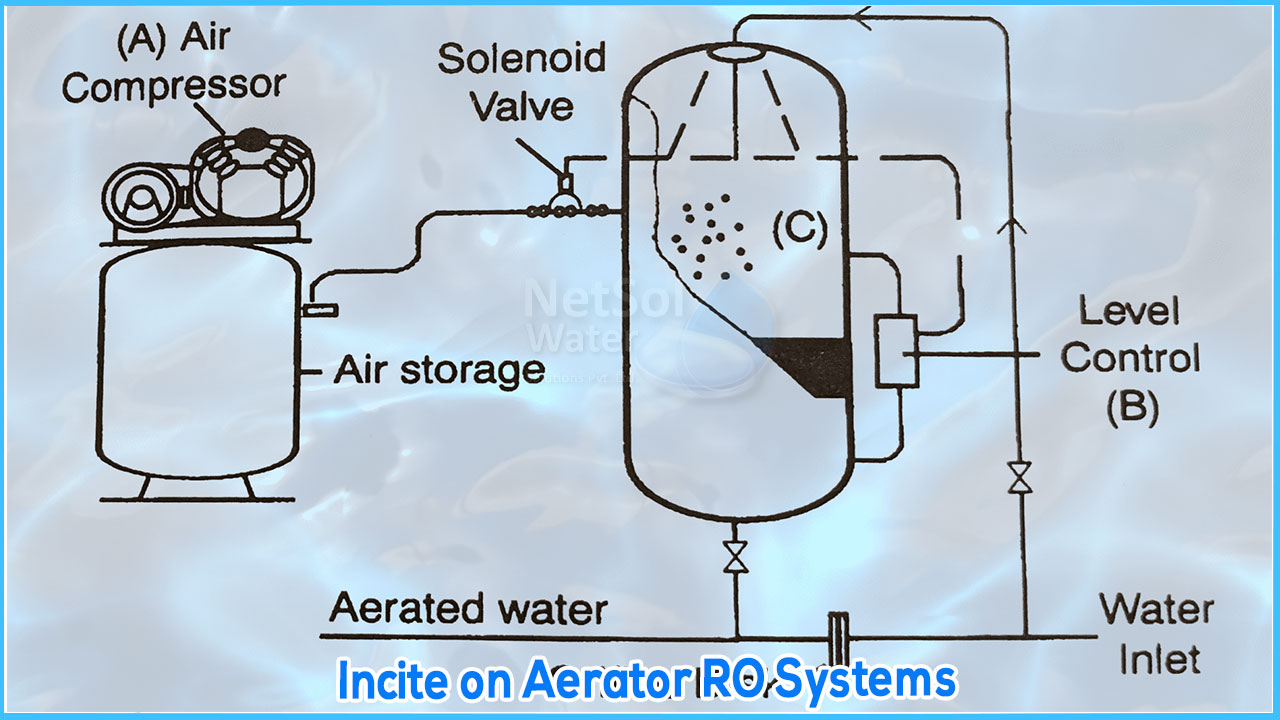In the process of eliminating iron and hydrogen sulphide from water, aeration is utilized as a pretreatment. Both iron and hydrogen sulphide are easily oxidized by air. It turns unfilterable ferrous iron to filterable ferric iron fast, and it reduces hydrogen sulphide to elemental Sulphur, which can be easily removed from water with a filter. Air oxidizes at a rapid rate, much faster than chlorine.
Iron, manganese, and hydrogen sulphide are all easily oxidized by air. It offers a number of benefits over chemical oxidizers, including a low cost and a large supply. There is no need for regular monitoring or chemical inputs with aeration treatment. It doesn't add anything to the water that you don't want, and it doesn't produce any unwanted by-products. Aeration of water has occurred in nature from the beginning of time.
As a result, the aeration process in water treatment can perform two vital functions:
- De-gasification and (2) oxygenation.
Aeration is likely the second-oldest treatment technology in use today, after filtering. Its operations are simple to comprehend, and the results of the therapy procedure are visible. Milk is occasionally aerated to remove barn odors at dairies by running it over exposed, cooled surfaces right after milking.
The primary goal of water aeration is to improve a water supply's physical and chemical qualities. An aeration system can reduce volatile chemical concentrations in some circumstances while increasing volatile substance concentrations in others.
Water aeration is beneficial in the following situations:
-The chemical reduction of ferrous iron and manganous manganese;
-The mechanical reduction of dissolved residual gases, volatile synthetic organic compounds, and hydrocarbons; and the removal of some undesirable odors by reducing odoriferous materials.
TYPES OF AERATOR RO SYSTEM
In industrial/municipal applications, two fundamental types of water aeration systems are used, and both are used for business and industrial aeration as well. They are as follows:
1-OPEN-GRAVITY SYSTEMS, in which aerated water must be repumped to repressurize the service water, and
2-CLOSED-PRESSURE SYSTEMS, in which the water system does not need to be repressurized.
1-OPEN GRAVITY AERATORS
The open-gravity aerator's primary function and application is water degasification. A quick glance at huge, industrial-size systems will help you better comprehend open-gravity technologies
The open aerator is originally used to push air into close contact with water by blowing air in a countercurrent direction to the dispersed water stream. The air, along with any escaping chemicals, leaves through the air shaft in this technique.Another method involves forcing pressurized air upward through water in a big tank, with the turbulence carrying away volatile chemicals.
2-CLOSED PRESSURE AERATORS
The principal function and use of a closed-pressure aerator is to oxygenate water. The closed-pressure aerator is under constant static pressure, as the name implies, and the existing line pressure is used to carry out the process' functions. Unlike open-gravity aeration systems, no repumping is necessary. Some pressure drop can occur when using a closed-pressure system, but it is normally modest and ranges from 2 to 5 psi for the aerator-saturator. Depending on the type of filter medium, control valve design, and any precipitant built up in the filter between backwashing cycles, any consecutive filtering step will add another 8 to 10 psi.
The escape of any dissolved free gases or other volatile substances is severely limited because the system is under continual pressure. Any volatile compounds can only be blown out of the closed aerator system using a pressure release mechanism.
Throughout the wastewater treatment process, different plants must prioritize different demands and goals. A few considerations will influence the decision on which industrial aeration system is best for your wastewater treatment plant:
- 1. Volume of waste water
- 2. Composition of waste water and oxygen requirements
- 3. Demands for efficiency
- 4. Size of the tank or lagoon
- 5. Climate and location of the plant
- 6. Goals for lowering maintenance costs
- 7. Goals for capital costs
- 8. Goals for maintenance costs
- 9. Goals for energy costs




